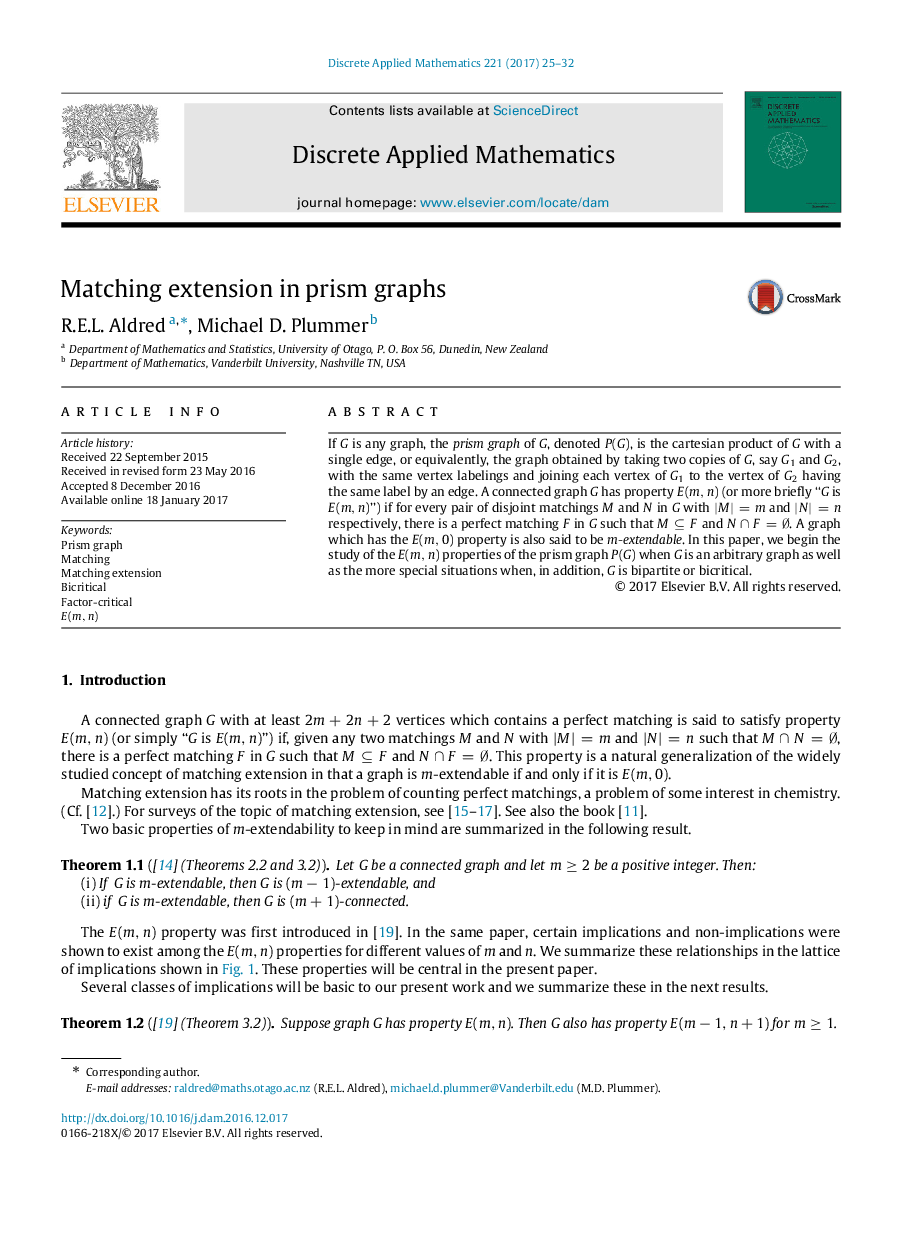| Article ID | Journal | Published Year | Pages | File Type |
|---|---|---|---|---|
| 4949690 | Discrete Applied Mathematics | 2017 | 8 Pages |
Abstract
If G is any graph, the prism graph of G, denoted P(G), is the cartesian product of G with a single edge, or equivalently, the graph obtained by taking two copies of G, say G1 and G2, with the same vertex labelings and joining each vertex of G1 to the vertex of G2 having the same label by an edge. A connected graph G has property E(m,n) (or more briefly “G is E(m,n)”) if for every pair of disjoint matchings M and N in G with |M|=m and |N|=n respectively, there is a perfect matching F in G such that MâF and Nâ©F=â
. A graph which has the E(m,0) property is also said to be m-extendable. In this paper, we begin the study of the E(m,n) properties of the prism graph P(G) when G is an arbitrary graph as well as the more special situations when, in addition, G is bipartite or bicritical.
Related Topics
Physical Sciences and Engineering
Computer Science
Computational Theory and Mathematics
Authors
R.E.L. Aldred, Michael D. Plummer,
